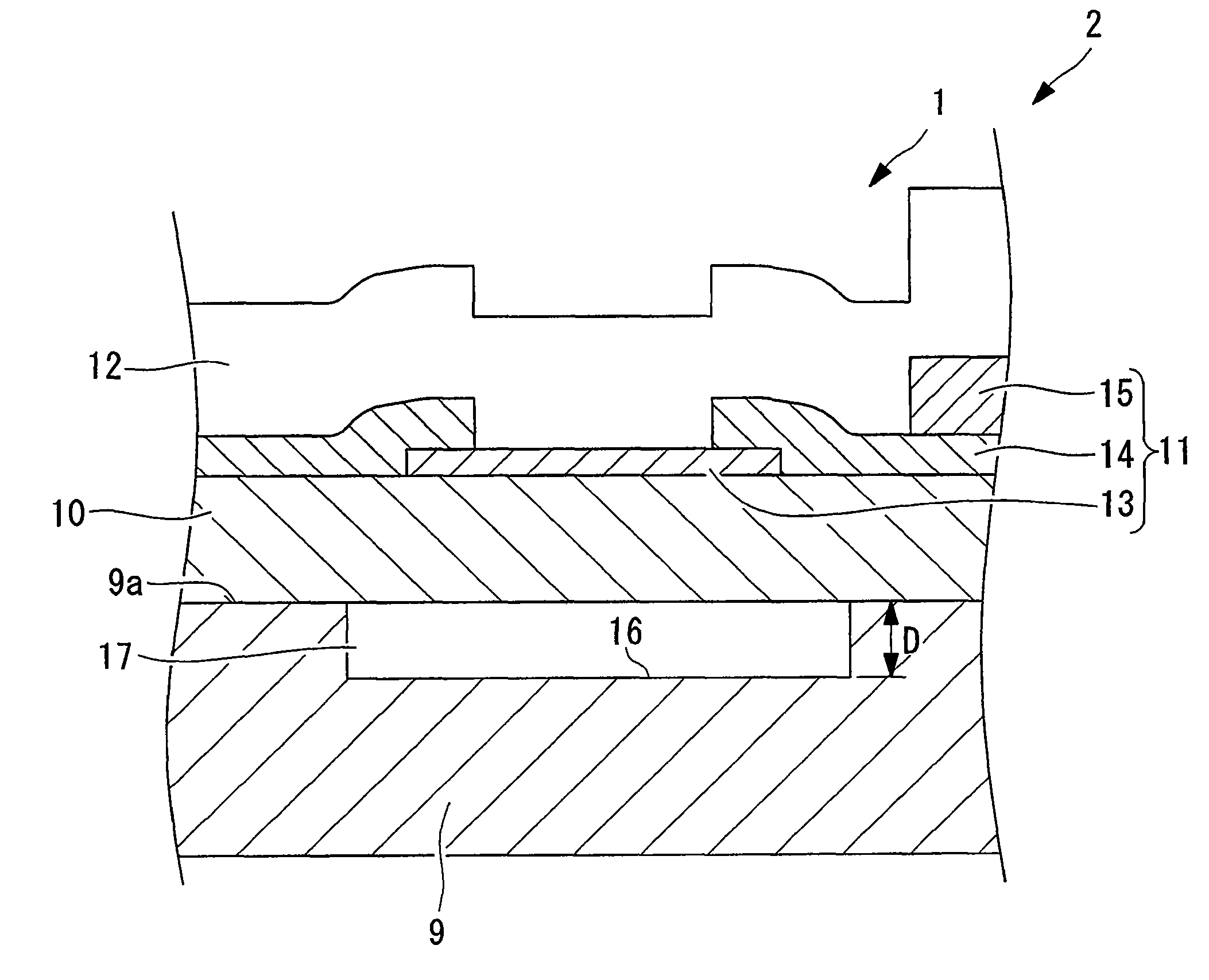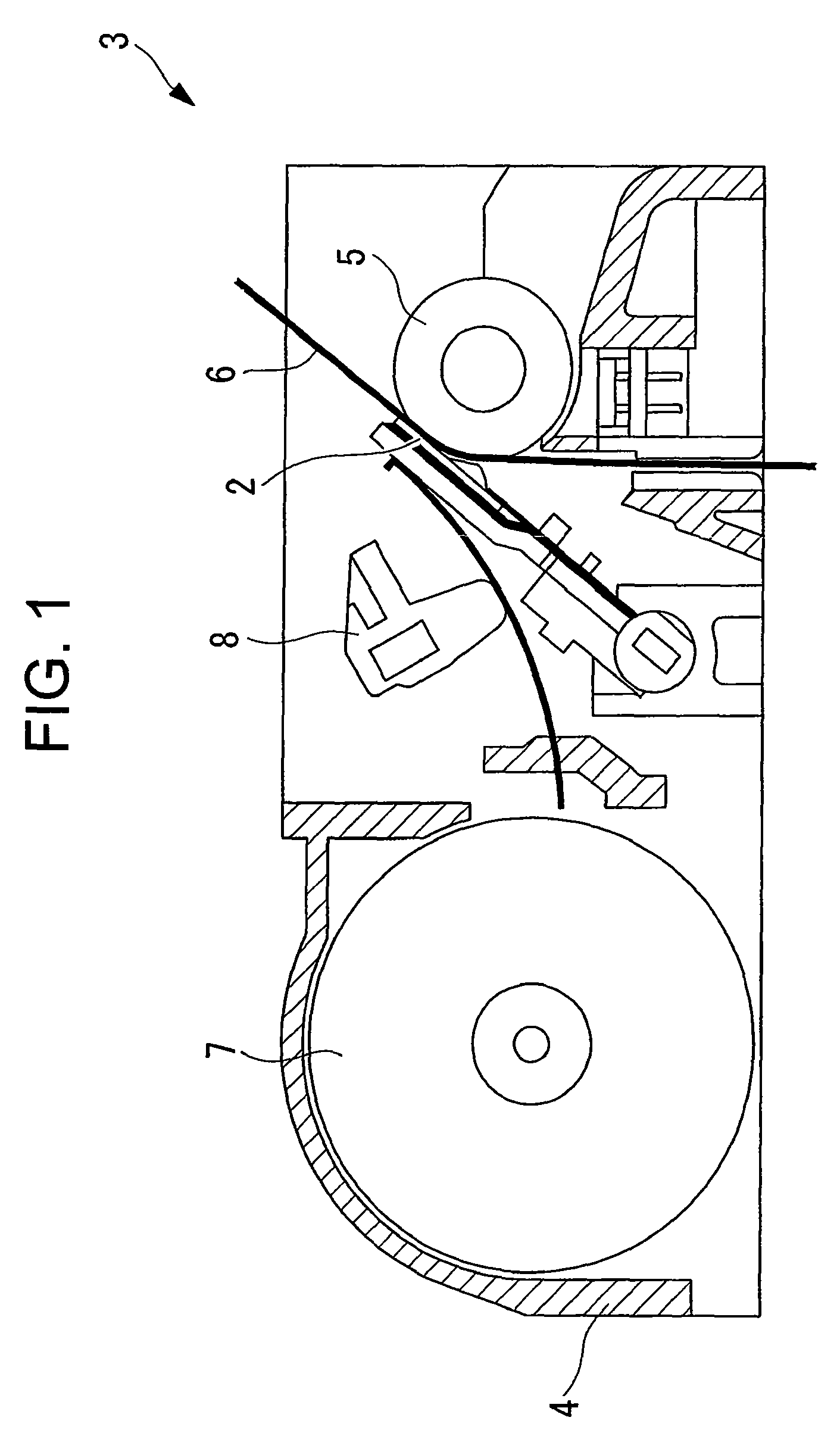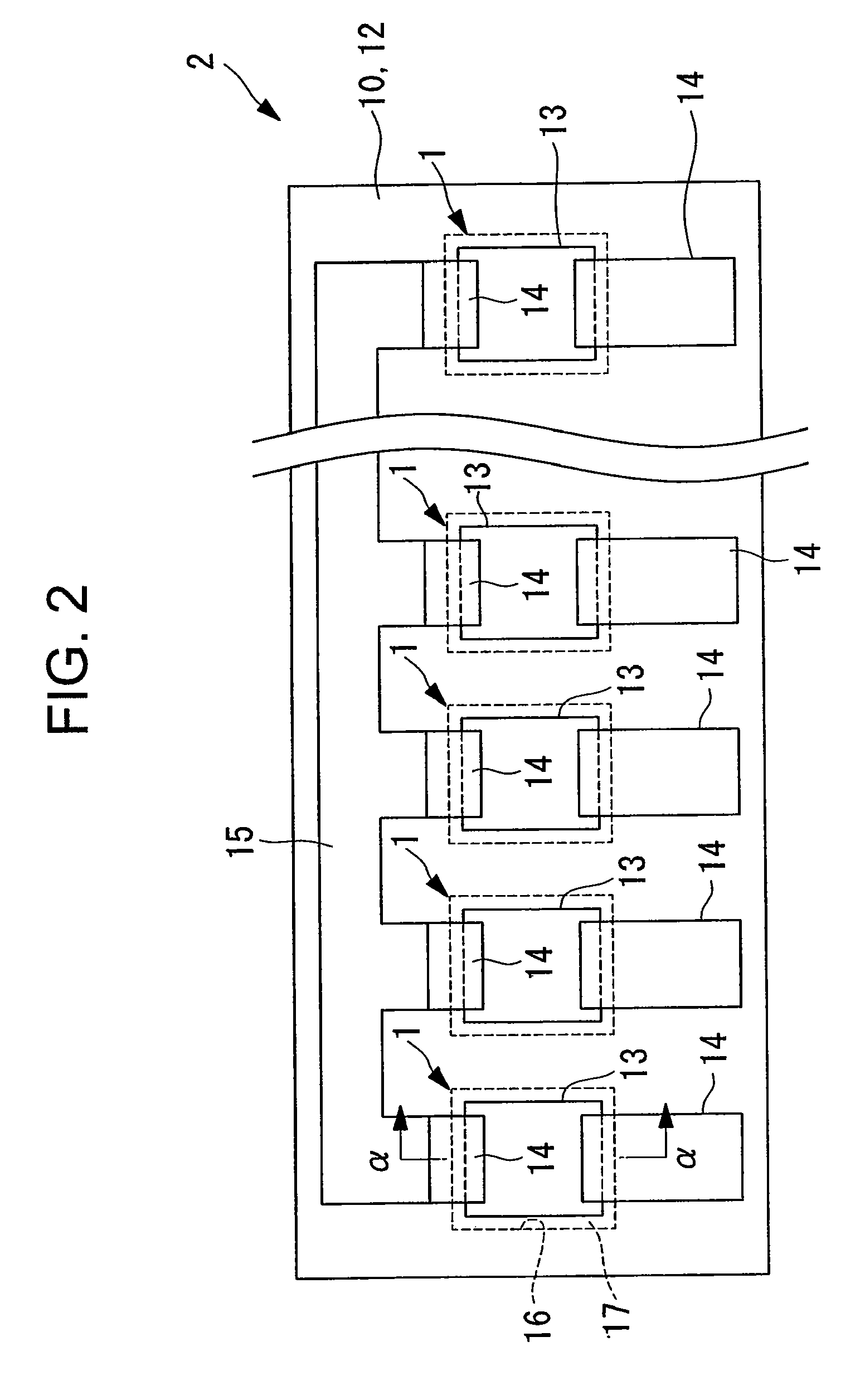Heating resistor element, manufacturing method for the same, thermal head, and printer
a manufacturing method and resistor technology, applied in the direction of ohmic-resistance heating, electrographic process, instruments, etc., can solve the problems of deteriorating printing quality, difficult to manufacture or handle thin plate glass having a thickness of 100 m, and high cost of materials, so as to reduce power consumption, facilitate and reliably bond to each other, and efficiently use
- Summary
- Abstract
- Description
- Claims
- Application Information
AI Technical Summary
Benefits of technology
Problems solved by technology
Method used
Image
Examples
Embodiment Construction
[0043]Hereinafter, a heating resistor element 1, a manufacturing method for the same, a thermal head 2, and a thermal printer (printer) 3 according to an embodiment of the present invention are described with reference to FIGS. 1 to 7.
[0044]The heating resistor element 1 according to this embodiment is used in the thermal head 2 of the thermal printer 3 shown in FIG. 1.
[0045]The thermal printer 3 includes a body frame 4, a platen roller 5 which is horizontally arranged, the thermal head 2 which is arranged to be opposed to an outer periphery of the platen roller 5, a sheet feeding mechanism 7 feeding thermal paper 6 between the platen roller 5 and the thermal head 2, and a pressurizing mechanism 8 pressing the thermal head 2 against the thermal paper 6 with a predetermined pressing force.
[0046]The thermal head 2 is formed in a flat plate-like shape as shown in a front view of FIG. 2, and includes a plurality of heating resistor elements 1 at intervals. As shown in a vertical cross s...
PUM
 Login to View More
Login to View More Abstract
Description
Claims
Application Information
 Login to View More
Login to View More - R&D
- Intellectual Property
- Life Sciences
- Materials
- Tech Scout
- Unparalleled Data Quality
- Higher Quality Content
- 60% Fewer Hallucinations
Browse by: Latest US Patents, China's latest patents, Technical Efficacy Thesaurus, Application Domain, Technology Topic, Popular Technical Reports.
© 2025 PatSnap. All rights reserved.Legal|Privacy policy|Modern Slavery Act Transparency Statement|Sitemap|About US| Contact US: help@patsnap.com



